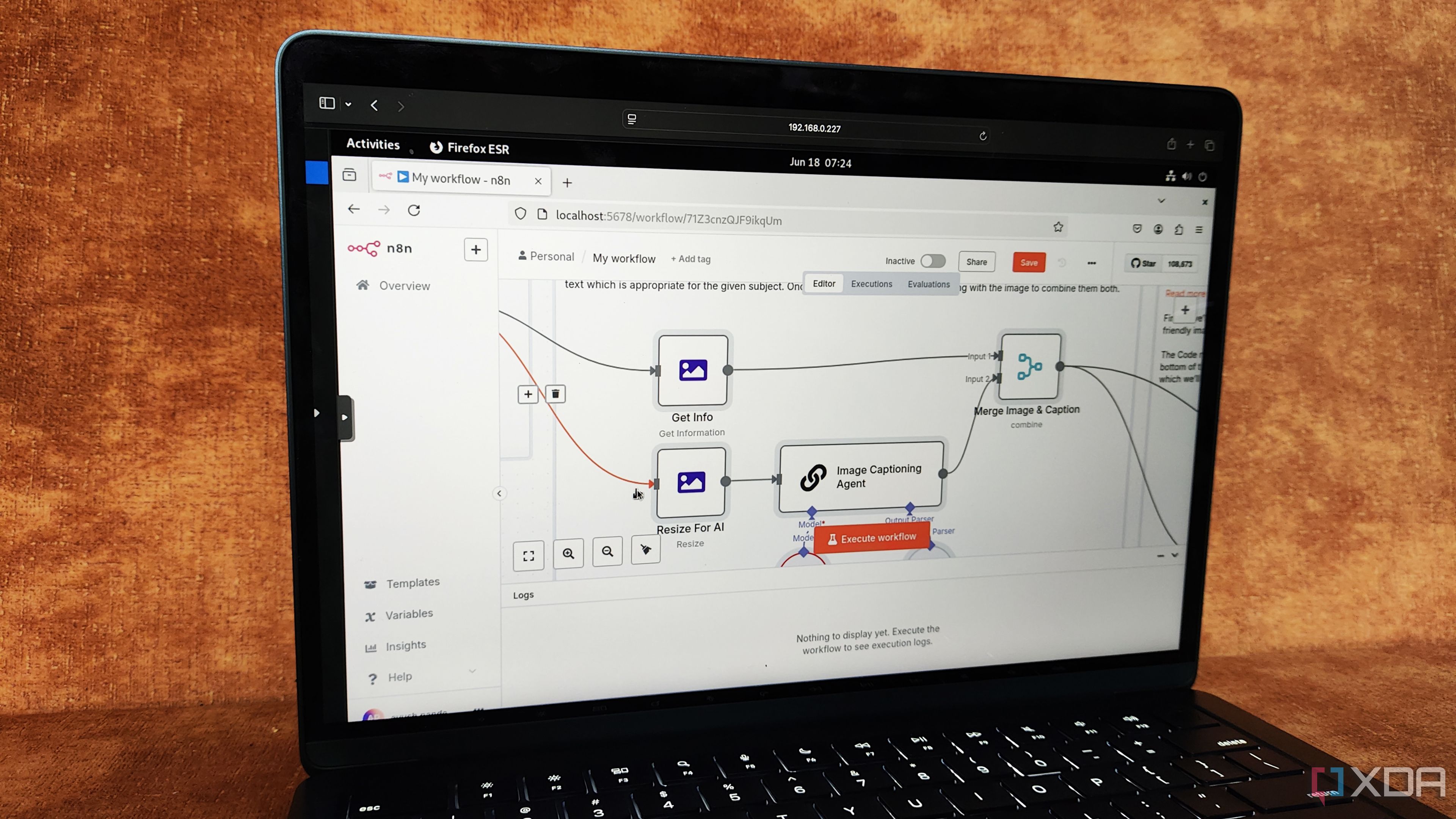Automation
Recent Articles
Sort Options:

I tested Tines, n8n, and Zapier, and they're all worth trying out for home and business automation
Automation apps significantly enhance quality of life by enabling trigger-action workflows. Notable platforms include Home Assistant and Node-RED for smart homes, alongside Ansible playbooks and Terraform for home labs, showcasing the versatility of automation technology.

n8nCoder
A new AI-powered assistant is transforming the way users build n8n workflows, streamlining the process and enhancing productivity. This innovative tool promises to simplify automation tasks, making it easier for users to create efficient workflows effortlessly.

Cisco touts AI agents in automating network management tasks
AgenticOps tools are revolutionizing enterprise campuses by enabling the orchestration of highly autonomous agents. This innovative approach enhances operational efficiency and adaptability, positioning organizations to thrive in a rapidly evolving business landscape.

AI-Driven Automation: Revolutionizing Data Engineering With Agentic Mesh Architecture
AI-driven automation presents businesses with a transformative opportunity to enhance operational efficiency, streamline processes, and minimize manual labor. This innovative technology is reshaping the landscape of business operations, driving productivity and growth across various industries.

Agentic AI Systems: Smarter Automation With LangChain and LangGraph
The landscape of automation is evolving with Agentic AI Systems, which utilize advanced tools like LangChain and LangGraph. These innovative technologies enable smart automation, allowing systems to adapt, learn, and tackle complex, dynamic challenges effectively.

otomatic.ai studio
A new tool allows users to manage their website's network seamlessly from a single interface, streamlining operations and enhancing efficiency. This innovative solution promises to simplify network management for businesses, making it easier to maintain online presence.
Tasker's new AI helper just made automations so much easier
Tasker, a leading automation app for Android, is enhancing user experience by integrating AI to simplify the setup of automations and routines. This update aims to alleviate the manual effort involved in creating these helpful tools.

Magentic-UI
The article explores how automation can streamline web tasks, enhancing efficiency while allowing users to maintain control. It highlights the benefits of integrating automation tools to optimize workflows and improve productivity in various online activities.

Agentic Process Automation This Way Comes to Software Engineering
At Automation Anywhere’s Imagine conference in Orlando, the transition from robotic process automation (RPA) to agentic process automation (APA) was highlighted, signaling transformative changes for low-code/no-code and citizen developers in the software development landscape.

New enabling technologies from Automate 2025
Automate 2025 showcased over 800 exhibitors and 40,000 attendees, unveiling cutting-edge technologies in industrial automation. Highlights include Cattron's XBMCU control unit, Schneider Electric's AI co-pilot, and Novarc's AI-driven welding systems, enhancing productivity and efficiency in manufacturing.

Automation, Amid Manufacturing Uncertainty, Hits The Accelerator
At the Automate trade show in Detroit, manufacturers expressed a strong demand for increased automation and speed in production processes, highlighting the industry's push towards advanced technology solutions to enhance efficiency and competitiveness.

Beyond Prompt-And-Pray: Why Structured Automation Is The Future Of Enterprise AI
Structured automation enhances efficiency in AI systems, making them more cost-effective, scalable, and operationally predictable. This advancement addresses key challenges, ensuring that organizations can leverage AI technology effectively while minimizing operational hurdles.